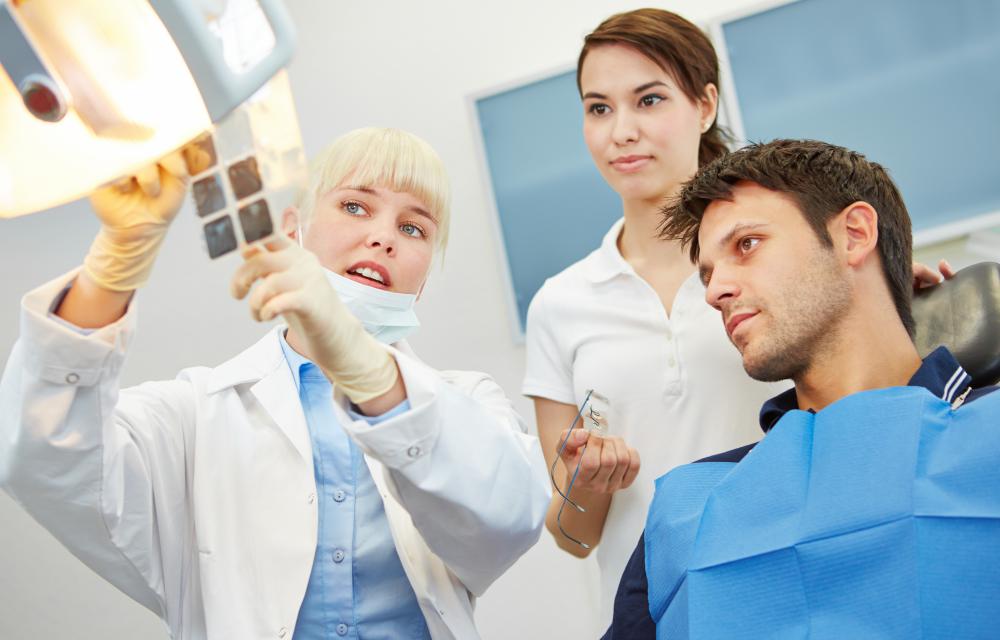At WiseGEEK, we're committed to delivering accurate, trustworthy information. Our expert-authored content is rigorously fact-checked and sourced from credible authorities. Discover how we uphold the highest standards in providing you with reliable knowledge.
What Is the Relationship between Radiography and Medical Imaging?
The relationship between radiography and medical imaging is that radiography is a specific type of medical imaging. It is one of the first imaging techniques medical personnel used with success to diagnose and treat illnesses and injuries. Digital technologies have advanced medical imaging and sometimes are preferred due to concerns about the increased cancer risk from radiation exposure, but because these technologies are not suited to all situations, medical professionals keep radiography in their arsenal of diagnostic tools.
The connection between radiography and medical imaging is best understood by looking first at the definition for radiography. Radiography is the process of making an image on a surface that is radiosensitive. To do this, radiographers use an X-ray machine, which is essentially a type of camera. X-rays are just like the light people see in that they are a form of energy, but they have a different wavelength and therefore are invisible to the eye. These rays penetrate substances at different rates based on the substances' densities, so when something is between the X-ray machine and film, the X-rays end up exposing the film in varied amounts.

The first person to discover that X-rays could make radiographs, or images from forms of radiation, was German physicist Wilhelm Conrad Roentgen. While conducting experiments with electron beams, he observed that the fluorescent screen in his work area glowed when the gas discharge tube he was using was on, which proved that some radiation was hitting the screen. When he held his hand between the tube and the screen, he saw the shadow of his bones. When a contemporary, trained radiographer takes an X-ray image, he is simply using a more sophisticated machine instead of Roentgen's gas discharge tube to produce X-rays in a concentrated way. The patient with whom the radiographer works puts a part of his body between the radiographer's X-ray machine and film, just as Roentgen put his hand between his tube and screen.

Because Roentgen was able to see internal parts of his own body using X-rays, other scientists quickly saw the potential medical uses for radiography. The first person to use X-rays specifically with a medical intent was John Hall-Edwards in 1896, just a year after Roentgen's experiment. Hall-Edwards used X-rays to examine a patient internally in order to perform surgery. Radiography and medical imaging have been linked ever since, with Marie Curie serving as one of the first major proponents of using X-rays for medical purposes.

Early medical imaging specialists only worked with X-rays to produce radiographs for diagnostic purposes. As people learned more about the behavior of atoms and molecules and technology advanced, however, they developed other medical imaging techniques, many of which use digital technology. Contemporary medical imaging workers often are familiar with several of these techniques and may not use radiography exclusively despite being called "radiologic technicians," "radiologic technologists" or "radiographers."
AS FEATURED ON:
AS FEATURED ON:














Discuss this Article
Post your comments